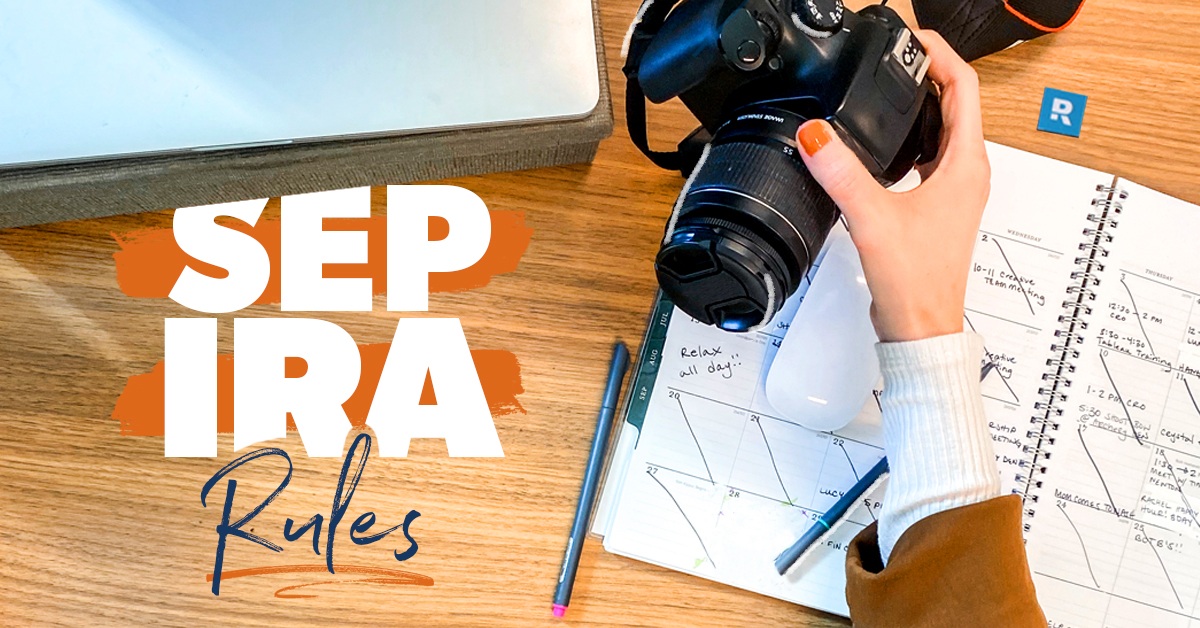
Key Takeaways
- A SEP-IRA, which stands for Simplified Employee Pension Individual Retirement Account, is one way small-businesses owners can invest for themselves and their employees.
- The SEP-IRA is like an old-school pension plan: Only the employer makes contributions. All funds in a SEP-IRA are immediately vested, which means the employee has full ownership as soon as the money is deposited.
- Contribution limits for the SEP-IRA are high—up to 25% of your compensation, or a max of $70,000 in 2025 (whichever amount is less).1
- As with most retirement plans, you’ll pay a penalty if you make withdrawals from your SEP-IRA before you reach age 59 1/2, and you have to take required minimum distributions (RMDs) by the time you reach age 73.2
- The SECURE 2.0 Act introduced the Roth SEP-IRA option, which allows you to invest with after-tax dollars—and get tax-free withdrawals in retirement.
Look at you! You’re either kicking butt as your own boss or you’re killing it as an employee of a small business. In either role, you’re the backbone of the American economy.
Market chaos, inflation, your future—work with a pro to navigate this stuff.
So, you’ve got your business plan in place and you know where you’re headed—but what about your retirement plan? Are there small-business retirement options out there for you? There sure are! And one of them is the SEP-IRA.
What Is a SEP-IRA?
A SEP-IRA, which stands for Simplified Employee Pension Individual Retirement Account, is one way small-business owners can invest for their employees’ (and their own) retirement. It’s a tax-deferred retirement savings plan that works a lot like a traditional IRA.
The SEP-IRA provides a retirement plan option for companies with small teams—or a team of one—with simpler setup and lower administrative costs than many other employer-sponsored retirement plans. And anything that makes this stuff easier for small-business owners is a good thing in our book.
How Do SEP-IRAs Work?
If you know how a pension plan works, you already get the basics about the SEP-IRA. Employees can’t make any contributions here—they’re all made by the employer on behalf of eligible employees. If you’re the employee, this is phenomenal (it’s free money!). And if you’re the small-business owner, your contributions are tax-deductible, so you win too.
SEP-IRAs offer other advantages as well. They’re easy to set up and have high annual contribution limits. Plus,contributions are immediately vested—meaning that money belongs to the employee from day one.
But how do you know if you’re eligible? Thankfully, the answer is pretty straightforward. There are three things that qualify you to participate in a SEP-IRA:
- You’re at least 21 years old.
- You’ve worked for the employer (or have been self-employed) for at least three of the last five years.
- You received a minimum of $750 in compensation from the employer during the tax year.3
There’s a catch, though: If you’re the employer and your employees who are eligible choose to participate, you must contribute for them. Also, any contributions you make for yourself must be equal to the salary percentage you contribute for each participant. For example, you can’t give yourself 15% but only contribute 2% for your employees (even if your last name is Scrooge).
On the flip side, the company isn’t locked into contributing annually (you can skip a year if revenues are way down, for example). So, deciding how much to contribute—or whether to contribute at all—can change from year to year. And speaking of contributions . . .
What Are the SEP-IRA Contribution Limits for 2025?
The SEP-IRA’s contribution limits set it apart from other plans in a big way. For 2025, employers are allowed to contribute up to 25% of an employee’s salary or a max of $70,000—whichever is less.4
Let’s do some quick math for the sake of comparison. If you’re investing through a traditional IRA in 2025, your contribution limit is $7,000 ($8,000 if you’re 50 or older).5 But if your employer contributed up to the max for your SEP-IRA (remember, that’s a max of $70,000), you could get several times the annual limit of a traditional IRA invested into your account!
And here’s another bonus of the SEP-IRA: You can still contribute to another IRA. Yep, employer contributions from a SEP-IRA don’t count toward employee contributions to another plan, such as a Roth or traditional IRA. If you’re making contributions to more than one retirement savings plan, just be sure you talk with an investment pro who can help you put a solid game plan in place. You’ll want to stay up to date on any requirements that apply in your situation.
How Will a SEP-IRA Affect My Taxes?
SEP-IRAs offer both small-business owners and participating employees a tax-favored way to save for retirement. If you’re the employer, you can deduct contributions you make to the plan for your employees (up to 25% of all participants’ compensation).6 You can also deduct the fees of the company managing the plan if contributions to the plan don’t cover them. Earnings on the contributions are generally tax-free until you or your employees receive distributions from the plan.
If you’re the employer, you can make contributions up to the tax filing due date—and that includes extensions.7 That means you can keep making contributions right up to Tax Day (or six months later, if you file an extension). Even better, you can deduct contributions you make to the plan for yourself.8
What Else Do I Need to Know About SEP-IRAs?
Like other traditional retirement accounts, the SEP-IRA has a few details you need to think about.
First, like traditional IRAs, you’re able to start taking distributions after age 59 1/2—but you’re required to start taking minimum distributions starting at 73. And since the plans are funded with pretax dollars, you’ll pay taxes on those distributions in retirement. But any withdrawals you make before 59 1/2? Those are taxed as income and come with a 10% penalty.9
Like 401(k)s and traditional IRAs, SEP-IRAs let the employees manage the investments in the plan. The provider or brokerage firm that holds the plan’s assets determines eligible investments and handles all the boring stuff, like managing contributions, providing annual statements, and filing all the paperwork with the IRS.
Unfortunately, unlike other traditional options, the SEP-IRA doesn’t allow catch-up contributions for people who are 50 or older. But it’s not all bad news . . .
Congress passed the SECURE 2.0 Act in late 2022, which introduced lots of new regulations—including a Roth option for SEP-IRAs. This is great news for small-business owners and their employees, who now have the option to invest with after-tax dollars—and enjoy tax-free withdrawals in retirement.
Plus, Roth plans don’t have required minimum distributions (RMDs) like tax-deferred plans do. If you’re a small-business owner, the Roth SEP-IRA may be something to talk about with a pro to see if it’s right for your business.
How to Set Up a SEP-IRA
Establishing a SEP-IRA as a small-business owner is easier than shopping for ice cream (depending on how picky your family is). There are five major steps:
- Choose a provider or financial institution. Usually, this is a brokerage firm that will act as legal custodian for the funds.
- Adopt a written plan agreement. This agreement outlines what you plan to provide (how much the company will contribute). You’ll fill out IRS Form 5305-SEP and keep it for your records.
- Choose the investment options within the plan. Tell your employees about their retirement investment options in the plan, usually by providing a copy of the above form (and probably having a meeting). We suggest having a variety of good growth stock mutual funds for you and your employees to choose from.
- Set up individual SEP-IRAs for eligible employees who opt in. You’ll open individual accounts with the provider you chose to help manage the plan.
- Start contributing to employees’ plans. Once the accounts are open and active, it’s time to start making those contributions!
Okay, so maybe it’s a little harder than shopping for ice cream. But you can always find investment help with a SmartVestor Pro.
Work With a SmartVestor Pro
There’s no getting around it—retirement accounts of any kind have a lot of details. But you’re scrappy—you’ve got this! And you don’t have to do it solo. Get with an investment professional like a SmartVestor Pro to lay out a retirement plan for your situation. Our SmartVestor program makes it easy to find a pro who can help you create a retirement plan with your goals in mind.
Next Steps
- Want to know if you’re saving enough for retirement? Explore your investing potential with the tools on our investing and retirement resources page.
- Get more clarity about your options with this article that will help you find the right retirement plan for you.
- Ready to set up a SEP-IRA and start investing for retirement? Work with a SmartVestor Pro to discover your options and make a plan for your future.
Make an Investment Plan With a Pro
SmartVestor shows you up to five investing professionals in your area for free. No commitments, no hidden fees.
Frequently Asked Questions
-
What’s the difference between a SEP-IRA and a SIMPLE IRA?
-
Comparing it to the SEP-IRA, here are a few key things that are different about the SIMPLE IRA:
- Both the employer and the employee contribute to the plan.
- For employees, contribution limits are $16,500 for 2025, with optional catch-up provisions if you’re over 50, depending on individual plan details.1
- The employer can match up to 3% of employee contributions.2
- Because of employee contributions being in the mix, the SIMPLE IRA is a little more complicated.
As always, talk to a pro to see which small-business retirement options are best in your situation.
-
What’s the difference between a SEP-IRA and a solo 401(k)?
-
Comparing it to the SEP-IRA, here are a few key things that are different about the solo 401(k):
- The company setting up the plan can’t have any employees. The solo 401(k) is for the business owner and their spouse only.
- Contribution limits are lower ($23,500 for 2025), with optional catch-up provisions if you’re over 50, depending on plan details.1
- Generally, the solo 401(k) is a little more complicated than a SEP-IRA but simpler than a traditional 401(k).
Definitely talk to a pro to see which self-employed retirement plan is best in your situation.
This article provides general guidelines about investing topics. Your situation may be unique. To discuss a plan for your situation, connect with a SmartVestor Pro. Ramsey Solutions is a paid, non-client promoter of participating Pros.



